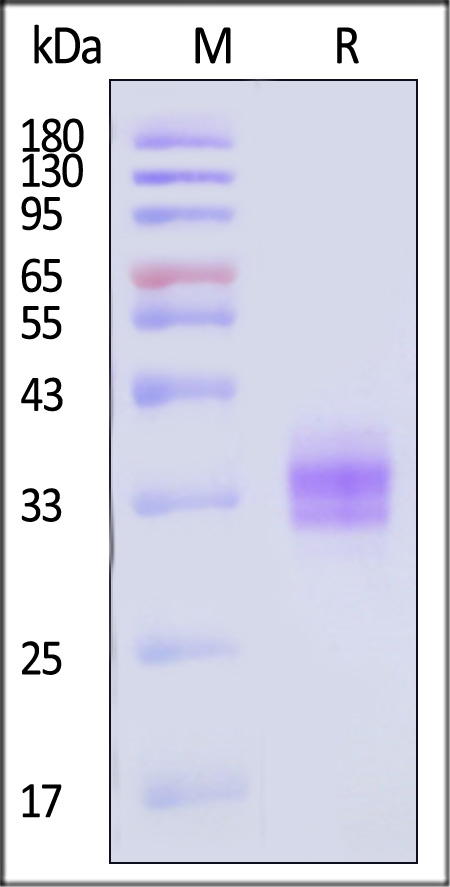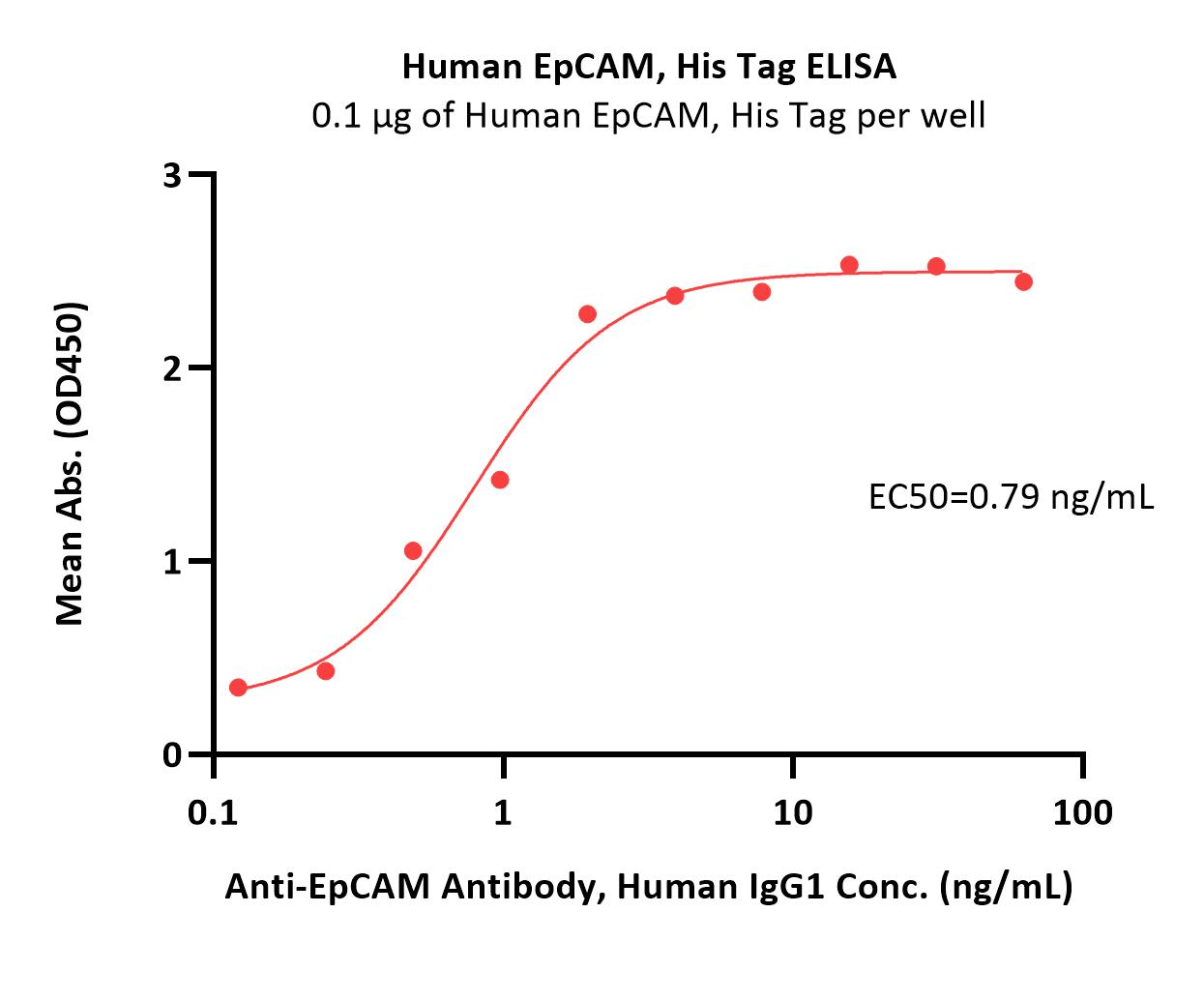产品详情
分子别名(Synonym)
EPCAM,TACSTD1,TROP1,CD326,DIAR5,EGP2,EGP314,EGP40,ESA,GA733-2,HNPCC8,HNPCC-8,KS1,4,KSA,M4S1,MIC18,MK1
表达区间及表达系统(Source)
Human EpCAM, His Tag (EPM-H5223) is expressed from human 293 cells (HEK293). It contains AA Gln 24 - Lys 265 (Accession # AAH14785.1).
Predicted N-terminus: Gln 24
Request for sequence蛋白结构(Molecular Characterization)

This protein carries a polyhistidine tag at the C-terminus.
The protein has a calculated MW of 28.2 kDa. The protein migrates as 31-40 kDa when calibrated against Star Ribbon Pre-stained Protein Marker under reducing (R) condition (SDS-PAGE) due to glycosylation.
偶联(Conjugate)
Unconjugated
内毒素(Endotoxin)
Less than 0.1 EU per μg by the LAL method.
纯度(Purity)
>95% as determined by SDS-PAGE.
制剂(Formulation)
Lyophilized from 0.22 μm filtered solution in PBS, pH7.4 with trehalose as protectant.
Contact us for customized product form or formulation.
重构方法(Reconstitution)
Please see Certificate of Analysis for specific instructions.
For best performance, we strongly recommend you to follow the reconstitution protocol provided in the CoA.
存储(Storage)
For long term storage, the product should be stored at lyophilized state at -20°C or lower.
Please avoid repeated freeze-thaw cycles.
This product is stable after storage at:
- -20°C to -70°C for 12 months in lyophilized state;
- -70°C for 3 months under sterile conditions after reconstitution.
质量管理控制体系(QMS)
产品展示
电泳(SDS-PAGE)

Human EpCAM, His Tag on SDS-PAGE under reducing (R) condition. The gel was stained with Coomassie Blue. The purity of the protein is greater than 95% (With Star Ribbon Pre-stained Protein Marker).
活性(Bioactivity)-ELISA

Immobilized Human EpCAM, His Tag (Cat. No. EPM-H5223) at 1 μg/mL (100 μL/well) can bind Anti-EpCAM Antibody, Human IgG1 with a linear range of 0.1-2 ng/mL (QC tested).
Protocol
用户评价 发表评论

背景介绍
Ep-CAM cross signaling with N-cadherin involves Pi3K, resulting in the abrogation of the cadherin adhesion complexes in epithelial cells was reported. And Epithelial cell adhesion molecule (Ep-CAM) recently received increased attention as a prognostic factor in breast cancer.














